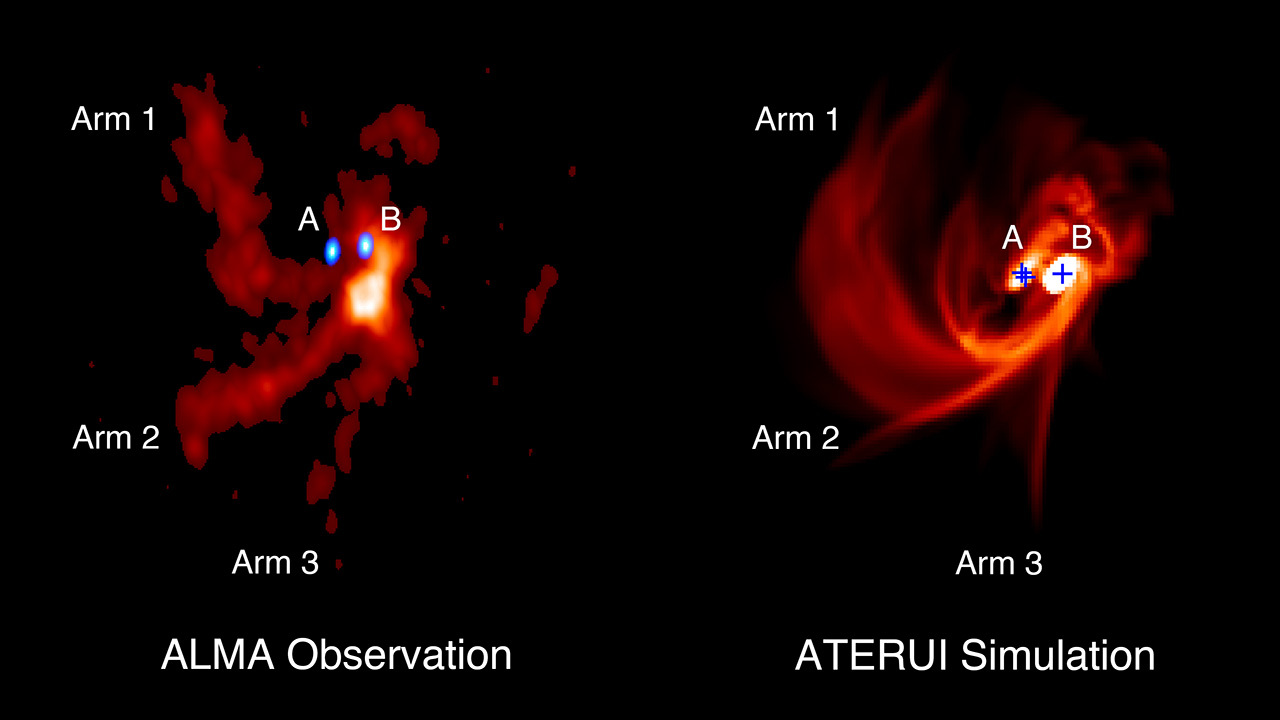Japanese-built supercomputers discover gas streamers feed triple-baby stars

Recent observations and supercomputer simulations of three gas spiral arms feeding three protostars in a trinary system have helped to clarify the formation of multi-star systems.
Most stars with a mass similar to the Sun form in multi-star systems together with other stars. So an understanding of multi-star system formation is important to an overall theory of star formation. However, the complexity and lack of high-resolution, high-sensitivity data left astronomers uncertain about the formation scenario. In particular, recent observations of protostars often reported structures called "streamers" of gas flows toward the protostars, but it has been unclear how these streamers form.
An international team led by Jeong-Eun Lee, a professor at Seoul National University, used the Atacama Large Millimeter/submillimeter Array (ALMA) to observe the trinary protostar system IRAS 04239+2436 located 460 light-years away in the constellation Taurus. The team found that emissions from sulfur monoxide (SO) molecules trace three spiral arms around the three protostars forming in the system. Video: {joomvideos id=327}
Comparison with simulations led by Tomoaki Matsumoto, a professor at Hosei University using the supercomputers “ATERUI” and “ATERUI II” in the Center for Computational Astrophysics at the National Astronomical Observatory of Japan (NAOJ) indicate that the three spiral arms are streamers feeding material to the three protostars. The combination of observations and simulations revealed, for the first time, how the streamers are created and contribute to the growth of the protostars at the center.
The discovery of three baby stars being fed by a single gas streamer is a remarkable feat of astronomy. It is a testament to the power of modern supercomputing technology and the dedication of the research team that such a complex and intricate system was able to be observed and documented. This discovery provides a unique insight into the formation of stars and the evolution of galaxies and could lead to further breakthroughs in our understanding of the universe. It is a reminder that the universe is full of wonders and that with enough dedication and hard work, we can uncover its secrets.
POPULAR
- NASA predicts the Sun's corona behavior, revealing its mysteries using advanced computational methods
- Australia on track for unprecedented, decades-long megadroughts: Supercomputer modeling raises concern
- Revolutionizing precision agriculture: The impact of Transformer Deep Learning on water, energy demands

 How to resolve AdBlock issue?
How to resolve AdBlock issue?